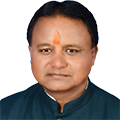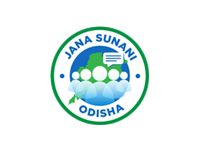The World Health Organization (WHO) Growth Standards are a set of internationally recognized guidelines designed to monitor the growth and development of children from birth to 5 years of age. These standards are crucial for identifying and addressing potential health and nutritional issues early in a child's life. Developed through extensive research, they provide a reliable benchmark for assessing the physical growth of children across diverse populations.
Key Features of the WHO Growth Standards:
- Comprehensive Data: The standards are based on data collected from a multi-country study, ensuring they are globally applicable and reflective of optimal growth patterns.
- Age and Gender Specific: Separate charts for boys and girls, accounting for physiological differences in growth rates and patterns.
- Multiple Growth Indicators: Includes various metrics such as length/height-for-age, weight-for-age, weight-for-length/height. These indicators provide a holistic view of a child's growth.
- Universal Application: Applicable to all children regardless of ethnicity, socio-economic status, or type of feeding (breastfed or formula-fed), promoting equity in health assessments.
- User-Friendly Tools: WHO provides easy-to-use charts and tables for healthcare providers, parents, and caregivers to track children's growth accurately and efficiently.
Importance for WCD (Women and Child Development) Department:
- Early Intervention: Facilitates early detection of growth abnormalities, allowing timely interventions to prevent malnutrition and related health issues.
- Policy Development: Informs evidence-based policies and programs aimed at improving child health and nutrition.
- Monitoring and Evaluation: Assists in the regular monitoring and evaluation of child growth programs, ensuring their effectiveness and helping to achieve Poshan 2.0 goal.
- Training and Capacity Building: Enhances the skills of Anganwadi workers and community in monitoring child growth accurately.
The Ministry of Women and Child Development has formally adopted the WHO Growth Standards for the nutritional assessment of children from birth to 5 years of age at Anganwadi centres. Anganwadi Workers are tasked with screening all children from birth to 05 years by measuring weight from the year 2007, However height/length measurement was adopted after introduction of Poshan Abhiyaan in the year 2018 with provision and supply of Infantometer and Stadio meter in all the Anganwadi centres .
Growth monitoring and promotion for children from birth to five years old is a key activity of Anganwadi Centres (AWCs) under the Poshan 2.0 programme. Regular growth monitoring allows mothers to see their child's growth progress or identify any lack of growth. This process provides mothers with specific, relevant, and practical guidance to ensure their children continue to grow healthily. In Odisha growth measurement is done across the state during first week of every month. The collected data is meticulously recorded through the mobile application Poshan Tracker. This digital tool ensures the accurate and timely categorization of children's nutritional status based on the WHO Growth Standards.
According to WHO Growth standards the three parameters of growth indices are wasting, underweight and stunting.
Wasting is defined as low weight-for-height/length signify acute malnutrition.
Underweight is defined as low weight-for-age is a composite indicators of chronic and acute malnutrition.
Stunting is defined as low height/length-for-age or chronic malnutrition.
Standard Deviation
Growth Indicators
Height/Length-for age
Weight-for-age
Weight-for-height/length
Median to -2 SD
Normal
Normal
Normal
<–2SD to –3SD
Stunted
Underweight
Wasted (Moderate Acute Malnutrition)
< –3SD
Severely Stunted
Severely Underweight
Severely Wasted (Severe Acute Malnutrition)















